Analysis of The Application of Good Manufacturing Practice (GMP) in The Production Process of Butterfly Pea Flower Syrup (Clitoria Ternatea L.) at UMKM Bu Karno, Jember Regency
DOI:
10.25047/jmaa.v4i2.102Issue:
Vol. 4 No. 2 (2024): DecemberKeywords:
GMP, Pea Flower Syrup, UMKMArticles
Downloads
How to Cite
Downloads
Metrics
Abstract
The implementation of the Good Manufacturing Practice (GMP) program is a key effort by the company to ensure a safe food system for consumers. This research aims to identify and analyze the aspects of GMP implementation at UMKM Bu Karno, following the standards set by the Regulation of the Minister of Industry of the Republic of Indonesia Number 75 of 2010. Additionally, it provides recommendations for improvements to meet GMP requirements and enhance the effectiveness of its implementation. The research employs a qualitative descriptive method. The population consists of UMKM Bu Karno, with samples taken from business owners and experts in relevant fields. Data identification and analysis were conducted through questionnaires filled out using a checklist, with data analyzed using Gap Analysis for each aspect of GMP implementation. The processed data revealed an average total percentage of 70.06%, indicating that the GMP program at UMKM Bu Karno requires further improvement to fulfill GMP standards and enhance its effectiveness. The company should also consider the provided improvement recommendations to elevate the quality of GMP program implementation.
Keywords — GMP, Pea Flower Syrup, UMKM Bu Karno
References
Admaja. 2013. “Study of the Readiness of the Directorate of Standardization in Implementing SNI ISO/IEC 17065.” 11, 223–234.
Ambarsari, I., & Sarjana. 2008. “Study on the Implementation of GMP (Good Manufacturing Practices) in the Red Guava Puree Industry in Banjarnegara District.” 1-16.
Bakhtiar, A., & Purwanggono, B. 2009. “Analysis of the Implementation of ISO 9001:2000 Quality Management System Using Gap Analysis Tools (Case Study at PT PLN (Persero) PIKITRING JBN Planning Division).” J@TI Undip: Vol. IV (No. 3). 163-170.
BPOM. 2012. “Procedures for Inspection of Household Food Production Facilities.” Indonesian National Agency of Drug and Food Control. Jakarta.
BSN. 2013. “Indonesian National Standard (Syrup).” National Standardization Agency - Indonesian National Standards. Jakarta.
Farisi, S., & Rasyid, M. I. 2021. “Implementation of Good Manufacturing Practices in Nutmeg Syrup Business in South Aceh District.” Journal of Social and Technology (SOSTECH) Vol. 2 No. 5. 425-430.
Hapsari, Y. tri, & Kurniawanti. 2022. “Assistance in the Implementation of Good Manufacturing Practice (GMP) in Herbal Medicine Businesses.” Journal of Community Service Madani and Lestari (JAMALI), 04(02), 96–105.
Juliana, N., & Megasari, W. O. 2021. “Analysis of Tofu Quality Through the Implementation of Good Manufacturing Practices (GMP) in Household Industry UD. Sari Makmur, Wakobalu Village.” Journal of Public Health, 11, 100–107.
Marimin, M. 2007. “Theory and Application of Expert Systems in Managerial Technology.” Bogor.
Mukherjee, P. K., Kumar, V., Kumar, N. S., & Heinrich, M. 2008. “The Ayurvedic Medicine Clitoria ternatea: From Traditional Use to Scientific Assessment.” Journal of Ethnopharmacology (Vol. 120, No. 3, pp. 291–301).
Ngatirah, Nugroho, E. A., & Sunardi. 2021. “Evaluation and Recommendation of Ginger Sugar.” JMM (Independent Community Journal), 5, 3567–3575.
Minister of Industry of the Republic of Indonesia. 2010. “Guidelines for Good Manufacturing Practices (GMP) in Processed Food Production.” Regulation of the Minister of Industry of the Republic of Indonesia. Jakarta.
Purba, E. C. 2020. “Butterfly Pea Flower (Clitoria ternatea L.): Utilization and Bioactivity.” EduMatSains Journal (Vol. 4, No. 2). 111-124.
Purwasih, R. 2021. “Implementation of GMP, SSOP, and HACCP Systems.” Agrointek, 15, 69–79.
Rianti, A., Christopher, A., Lestari, D., & Kiyat, W. El. 2018. “Implementation of Food Safety and Sanitation in the Production of Healthy Legume Beverages by UMKM Jukajo Sukses Mulia in Tangerang Regency.” (Vol. 12, No. 02). 167-175.
Sugiyono. 2017. “Research Methods: Quantitative, Qualitative, and R&D.” (Vol. 1). Jakarta: Alfabeta.
Thaheer, H. 2005. “HACCP (Hazard Analysis Critical Control Points) Management System.” (Vol. 1). Jakarta: Bumi Aksara.
Winarsih, S., Food Science and Technology, P., & Agricultural and Animal Science, F. 2019. “Impact of GMP and SSOP Implementation on the Quality of Turmeric Drink at SMUD SMK Muhammadiyah 2 Malang.” (JAPI) Journal of Indonesian Community Service. (Vol. 4). 57-62.
Author Biographies
Fauzan Nugroho, Politeknik Negeri Jember
Naning, Politeknik Negeri Jember
License
Copyright (c) 2024 Fauzan Nugroho

This work is licensed under a Creative Commons Attribution 4.0 International License.
You are free to:
- Share — copy and redistribute the material in any medium or format for any purpose, even commercially.
- Adapt — remix, transform, and build upon the material for any purpose, even commercially.
The licensor cannot revoke these freedoms as long as you follow the license terms.
Under the following terms:
- Attribution — You must give appropriate credit, provide a link to the license, and indicate if changes were made. You may do so in any reasonable manner, but not in any way that suggests the licensor endorses you or your use.
- No additional restrictions — You may not apply legal terms or technological measures that legally restrict others from doing anything the license permits.
Notices:
You do not have to comply with the license for elements of the material in the public domain or where your use is permitted by an applicable exception or limitation.
No warranties are given. The license may not give you all of the permissions necessary for your intended use. For example, other rights such as publicity, privacy, or moral rights may limit how you use the material.






